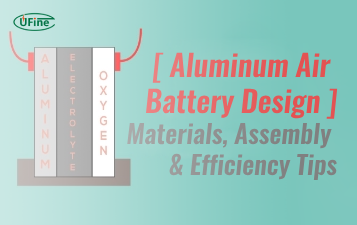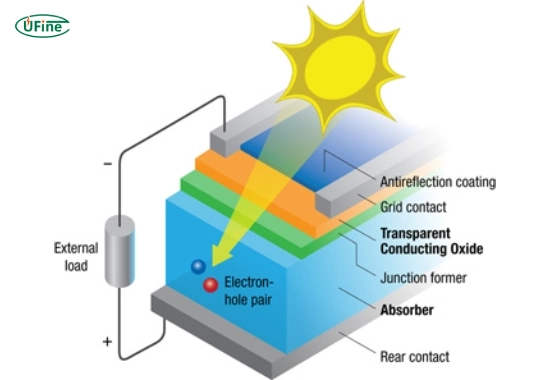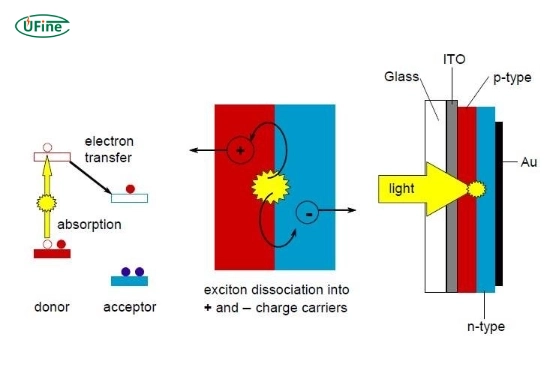The lifespan of organic solar cells (OSCs) is crucial as the world shifts towards renewable energy solutions. OSCs are an innovative technology that harnesses sunlight to generate electricity using organic materials. Understanding how long these cells last and what factors influence their durability can help consumers make informed decisions about their energy needs.
Part 1. What are organic solar cells?
Organic solar cells are photovoltaic technology that uses organic compounds—primarily carbon-based materials—to convert sunlight into electricity. Unlike traditional silicon-based solar cells, which rely on inorganic materials, OSCs offer unique advantages such as flexibility, lightweight design, and potentially lower production costs.
Key Characteristics of Organic Solar Cells
- Flexibility: OSCs can be manufactured on flexible substrates, allowing for applications in various settings, including portable electronics and building-integrated photovoltaics.
- Lightweight: These cells are significantly lighter than traditional solar panels, making them easier to install and transport.
- Lower Production Costs: The materials used in OSCs can be cheaper than silicon, potentially lowering manufacturing costs.
Part 2. How do organic solar cells work?
The operation of organic solar cells relies on the photovoltaic effect principle. When sunlight hits the organic material, it excites electrons, creating electron-hole pairs. An electric field at the junction of different organic layers within the cell separates these pairs. The movement of these charges generates an electric current.
The Structure of Organic Solar Cells
- Substrate: The base layer that supports the cell.
- Electrode Layers: Conductive layers that collect and transport charges.
- Active Layer: The layer where light absorption and charge generation occur.
Part 3. How long do organic solar cells last?
The lifespan of organic solar cells can vary significantly based on several factors. On average, OSCs can last anywhere from 5 to 15 years, depending on their design, materials used, and environmental conditions.
Factors Influencing Longevity
- Material Quality: Higher-quality organic materials tend to have better stability and longevity.
- Environmental Conditions: Exposure to moisture, UV light, and extreme temperatures can degrade OSC performance over time.
- Cell Design: Innovative designs incorporating protective layers or encapsulation can enhance durability.
- Manufacturing Techniques: Advanced manufacturing processes can improve the consistency and reliability of OSCs.
Part 4. Advantages of organic solar cells
Organic solar cells offer several advantages over traditional photovoltaic technologies:
- Cost-Effectiveness: Lower material costs can lead to reduced overall system costs.
- Versatility: Their flexibility allows integration into various applications beyond traditional rooftops.
- Environmental Impact: Organic materials are often less harmful to produce and dispose of than silicon-based alternatives.
Part 5. Disadvantages of organic solar cells
Despite their advantages, organic solar cells also face challenges:
- Shorter Lifespan: Compared to traditional silicon solar cells, OSCs generally have a shorter operational life.
- Lower Efficiency: Currently, OSCs have lower energy conversion efficiencies than their silicon counterparts.
- Sensitivity to Environmental Factors: They can be more susceptible to moisture and UV exposure degradation.
Part 6. Comparing organic solar cells with traditional solar cells
When evaluating different types of solar technology, comparing their features is essential. Here’s how organic solar cells stack up against traditional silicon-based solar panels:
Differences Between Organic and Traditional Solar Cells
Organic solar cells typically have a shorter lifespan compared to traditional silicon panels. While OSCs generally last between 5 and 15 years, traditional panels can last over 25 years with proper maintenance.
Regarding efficiency, OSCs usually convert about 10-15% of sunlight into electricity, while traditional silicon panels achieve efficiencies ranging from 15% to over 20%. This means silicon panels usually produce more electricity than organic ones for the same amount of sunlight.
Another key difference is flexibility; organic solar cells are lightweight and flexible, making them suitable for various applications where traditional panels would be impractical due to weight or rigidity.
Here’s a comparison table summarizing these differences:
| Feature | Organic Solar Cells | Traditional Solar Cells |
|---|---|---|
| Lifespan | 5-15 years | 25+ years |
| Efficiency | 10-15% | 15-22% |
| Flexibility | Yes | No |
| Weight | Lightweight | Heavier |
| Cost | Potentially lower | Generally higher |
Part 7. How do organic solar cells perform in different weather conditions?
The performance of organic solar cells can vary significantly based on weather conditions:
- Sunny Conditions: In ideal sunny conditions, OSCs perform well but may not reach the efficiency levels of traditional panels due to their inherent design limitations.
- Cloudy Days: On overcast days, OSCs may experience a drop in performance but still generate some electricity since they can absorb diffuse sunlight.
- Rainy Weather: Rain can help clean the surface of OSCs; however, prolonged exposure to moisture without proper protection may lead to degradation over time.
- Extreme Temperatures: High temperatures can negatively impact the efficiency of OSCs; however, they tend to perform better in more excellent conditions compared to some traditional panels that may lose efficiency in extreme heat.
Part 8. Future developments in organic solar cell technology
Research in the field of organic photovoltaics is rapidly advancing. Scientists are exploring new materials and designs that could enhance efficiency and longevity:
- Perovskite Materials: Some researchers are investigating hybrid systems that combine perovskite materials with organic compounds for improved performance.
- Encapsulation Techniques: Innovations in encapsulation methods aim to protect OSCs from environmental degradation.
Part 9. Real-world applications of organic solar cells
Various innovative applications now utilize organic solar cells.
- Wearable Technology: Their lightweight and flexible nature makes them ideal for powering wearable devices.
- Building-integrated Photovoltaics (BIPV): Builders can integrate OSCs into materials like windows or facades without compromising aesthetics.
- Portable Electronics: Due to their lightweight properties, portable electronics offer a potential solution for charging small devices on the go.
Part 10. FAQs
-
What is the average lifespan of organic solar cells?
The average lifespan ranges from 5 to 15 years, depending on material quality and environmental conditions. -
Are organic solar cells efficient?
Currently, they have lower efficiency than traditional silicon-based cells, typically around 10-15%, but ongoing research aims to improve this figure. -
Can organic solar cells be recycled?
Researchers are developing recycling processes to improve the efficiency of recycling many components in organic solar cells. -
How do environmental factors affect organic solar cell performance?
Environmental factors such as moisture and UV exposure can significantly degrade performance over time, leading to a shorter lifespan than other technologies. -
Where are organic solar cells commonly used?
Manufacturers often use them in flexible, lightweight solutions, such as wearable technology and building-integrated photovoltaics.
Related Tags:
More Articles

Aluminum Air Battery Design: Materials, Assembly & Efficiency Tips
An aluminum air battery uses aluminum and air to generate power. Learn its materials, assembly steps, and tips to boost energy output and efficiency.
7 Advantages of a Heated Lithium Battery in Cold Climates
Looking to power batteries in freezing temps? Heated lithium batteries excel in cold climates. Here are 7 key benefits and how they work.
How to Choose the Best Floor Scrubber Battery for Commercial Cleaning?
Selecting the ideal floor scrubber battery ensures a long runtime, rapid charging, and minimal maintenance for efficient commercial cleaning operations.
Battery for Blower vs Battery for Leaf Vacuum: Which One Should You Choose?
Battery for blower vs leaf vacuum—learn the key differences in power, fit, and runtime to choose the right battery for your outdoor tool needs.
How to Choose the Right Battery for Blower?
Choosing the right blower battery? Consider voltage, capacity, chemistry & usage. This guide helps match the best battery for peak performance.





